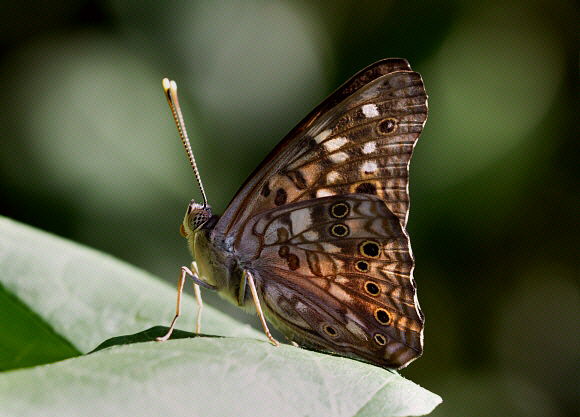
Introduction
There are 4 Asterocampa species. Three of these i.e. celtis, leilia, and clyton are all found in central America and the southern states of the USA. They are all similar in appearance, being marked with dark brown and white on a tawny background, and having a series of black ocelli on the hindwings. The fourth species idyja is found from Mexico to Puerto Rico and also on Cuba and Hispaniola. It is unlike the others, being mostly brown but with a broad creamy diagonal bar across the forewings, and a black apex with a pair of white subapical spots.
Asterocampa celtis is found across much of the USA, and in Mexico. Subspecies antonia is found in California, Texas, Arizona and in north and central Mexico.
Habitats
The butterfly breeds in scrub-desert, and in lightly wooded valleys and gorges, often in the vicinity of rivers or streams.
Lifecycle
The eggs are pale green, and are laid either singly or in clusters of up to 20 on the lower surface of leaves of Celtis (Ulmaceae) or sometimes on the twigs or bark. The larvae are gregarious at first but disperse and become solitary in later instars. The fully grown larva is pale green with a series of backward-pointing oblique yellow dashes, and thin yellow dorsal and lateral stripes. Its skin is rough in texture, and it possesses a pair of forward-pointing horns on the head. The pupa is bluish-green or yellowish-green and is suspended by the cremaster from a leaf of the foodplant.
Adult behaviour
Males feed at sap runs, or at dung, carrion, or decomposing fruit on the forest floor. They perch on tree trunks, foliage, or boulders to await and intercept passing females. Females nectar at flowers including Eupatorium.
